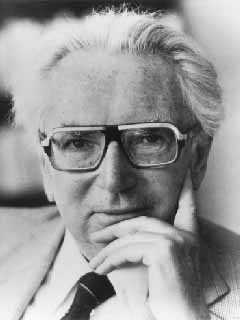In 1990, the psychiatrist Viktor Frankl delivered the keynote address at a conference held in Anaheim, California. As 7,000 people listened, Frankl told the compelling story of his life. He described the terrible things that happened to him while he was imprisoned in a Nazi death camp, and how he had nearly died many times. He was physically and psychologically abused and tortured. During his talk, Frankl described one day in particular that seemed to be etched deeply within him.
On a wintry day in Poland he was being marched through a field with a group of prisoners. He was dressed in thin clothing, with no socks, and he had holes in his shoes. Very ill from malnutrition and mistreatment, he began to cough. The cough was so severe that he fell to his knees. A guard came over and told him to get up and keep walking, but his cough was so intense and debilitating that he could not even answer. The guard began to beat him with a club and told him that he would be left to die if he did not get up. Frankl - who had witnessed this being done to other prisoners - knew the guard was deadly serious. Sick, in pain, and being hit, he thought, "This is it for me." He didn't have the wherewithal to get up.
Then, wonder of wonders, he told his imagined audience, he was able to stand up. The guard stopped beating him and he began, haltingly at first, then with more strength, to walk. As he was imagining describing this to his audience, his body got up and began to walk. He continued to imagine this lecture all the while he was doing the work detail and through the cold march back to the death camp. He collapsed into his bunk, imagining ending this brilliantly clear speech and receiving a standing ovation.
Many years later and thousands of miles away - in 1990 in Anaheim, California - he received a standing ovation from 7000 people after this speech.
(taken from "Do One Thing Different" by O'Hanlon)
*****
What if we imagined living in Yemos Ha'Moshiach?




The teivah had some elements of Yemos ha'Moshiach but the humans inside were in a constant state of giving since the animals needed 24hr care. Apparently the constant giving must take place before Moshiach can arrive and if we imagine ourselves giving more of ourselves in order to bring Moshiach, we can do what is necessary to make it happen.
ReplyDeleteLove this story.
ReplyDelete